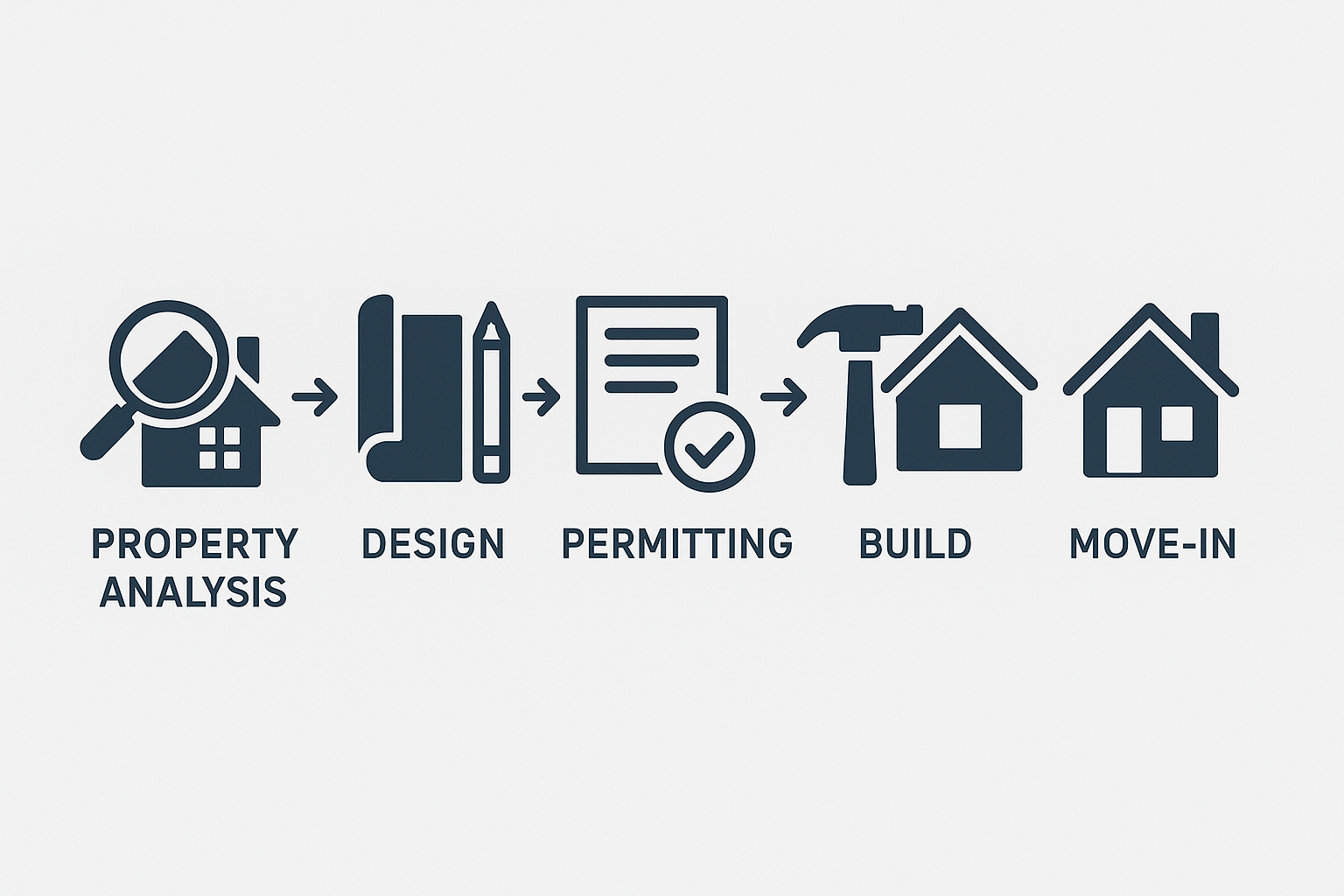Have you ever dreamed of turning Florida’s sun-soaked real estate market into a thriving rental empire? The state has experienced consistent population growth.
Due to this, Florida's rental market saw an impressive increase in property values as well by 2.5% from last year.
However, financing a rental portfolio requires careful planning and strategic decisions. If you are ready to build your rental portfolio, InstaLend, an expert hard money lender, offers customized rental portfolio loans in Florida tailored to your needs.
Let’s walk you through the steps to secure rental portfolio loans in Florida and maximize your investment potential.
Step 1: Assess Your Financial Situation
Before seeking financing, evaluate your current financial status. This includes reviewing your credit score, current debt, and cash reserves. Lenders will scrutinize these factors to determine your eligibility for rental portfolio loans. Aim for a credit score of at least 620 to qualify for better loan terms.
Tip: Keep your debt-to-income ratio below 45%. This will make you a more attractive borrower.
Step 2: Understand Florida’s Real Estate Market
- Market Trends: Stay informed about Florida’s real estate trends, such as population growth, rental demand, and property appreciation rates. Knowing these trends can help you make better investment decisions and anticipate market changes.
- Local Regulations: Each county in Florida may have specific regulations regarding rental properties. Familiarize yourself with zoning laws, tenant rights, and property management regulations in your target area.
Tip: Subscribe to local real estate newsletters or join local investor groups to keep up-to-date with market developments.

Step 3: Understand Loan Options
There are various financing options for building a rental portfolio:
- Conventional Loans: Suitable for borrowers with good credit. Offers lower interest rates but requires a substantial down payment.
- Portfolio Loans: Ideal for investors with multiple properties. Allows you to finance several properties under one loan.
- Hard Money Loans: Great for quick financing but comes with higher interest rates. Best for short-term investments.
Tip: Compare different loan types to find the one that best suits your investment strategy.
Step 4: Prepare Thorough Documentation
Gather all necessary documentation before applying for a loan. This includes:
- Personal identification (ID, Social Security number)
- Financial statements (bank statements, tax returns)
- Property information (appraisals, rental income history)
Tip: Having your documents organized can expedite the approval process.

Step 5: Build a Strong Business Plan
Lenders want to see a clear strategy for your rental properties. Your business plan should include:
- Market analysis
- Property management plans
- Financial projections
- Exit strategy
Tip: Highlight your experience in managing rental properties to build lender confidence.
Step 6: Develop a Contingency Plan
- Unexpected Expenses: Prepare for unexpected costs, such as emergency repairs or vacancies. Having a financial cushion can help you manage these situations without jeopardizing your investment.
- Exit Strategies: Have clear exit strategies for each property. Whether you plan to sell, refinance, or hold long-term, knowing your options can help you adapt to market changes.
Tip: Set aside a portion of your rental income for a contingency fund to cover unforeseen expenses.
Step 7: Evaluate Tax Implications
- Tax Benefits: Real estate investments offer various tax benefits, such as depreciation and deductions for property management expenses. Consult with a tax advisor to understand these benefits and how they can affect your overall investment strategy.
- Tax Planning: Plan for property taxes, income taxes, and potential capital gains taxes. Effective tax planning can enhance your investment returns and help you manage costs effectively.
Tip: Stay informed about Florida’s property tax policies. Keep detailed records of all property-related expenses to maximize your tax deductions.
Step 8: Consider Property Insurance
- Insurance Coverage: Protect your investment with comprehensive property insurance. This includes coverage for property damage, liability, and loss of rental income.
- Insurance Costs: Factor insurance costs into your overall investment budget. Compare policies from different providers to find the best coverage at a reasonable price.
Tip: Regularly review and update your insurance policy to ensure adequate protection.
Step 9: Choose the Right Lender
Not all lenders are created equal. Look for lenders with experience in Florida rental portfolio loans. Check their track record, read reviews, and compare interest rates and terms.
Tip: Consider working with a hard money lender with experience and professionalism.
Step 10: Apply for the Hard Money Loan
Submit your hard money loan application along with the required documentation. Be prepared for a thorough review process. Hard money lenders assess your creditworthiness, property values, and business plan.
Tip: Maintain open communication with the real estate lender to address any concerns promptly.

Step 11: Close the Loan
Once approved, you’ll proceed to the closing process. Review all loan documents carefully. Ensure you understand the terms, interest rates, and repayment schedule.
Tip: Hire a real estate attorney to review the documents and ensure everything is in order.
Step 12: Manage Your Portfolio
After securing financing, focus on effective property management. This includes:
- Regular maintenance
- Tenant screening
- Rent collection
- Financial tracking
Tip: Use property management software to streamline operations and improve efficiency.
Read more: 5 Strategies for Managing a Diverse Portfolio of Rental Properties
Step 13: Monitor Your Investments
Regularly review your rental portfolio’s performance. Monitor rental income, expenses, and property values. Adjust your strategy as needed to maximize returns.
Tip: Stay updated with market trends to make informed investment decisions.
Choose InstaLend for Your Rental Portfolio Loans In Florida
InstaLend understands the unique challenges of the Florida real estate market. Our team of hard money lenders is dedicated to helping you navigate the financing landscape with ease by offering top-notch rental loans.
Our streamlined process ensures quick approval and competitive rates, helping you unlock the full potential of your real estate investments.
Partner with InstaLend and take the first step towards building a thriving rental portfolio in Florida.










